This article was co-authored by wikiHow Staff. Our trained team of editors and researchers validate articles for accuracy and comprehensiveness. wikiHow's Content Management Team carefully monitors the work from our editorial staff to ensure that each article is backed by trusted research and meets our high quality standards.
There are 13 references cited in this article, which can be found at the bottom of the page.
This article has been viewed 10,418 times.
Learn more...
You’ve probably seen lots of different lube bottles stacked up at your local pharmacy or grocery store—but which is right for you? Between all the different labels, it’s super understandable if you’re feeling a little concerned and uneasy about which to take home. Take a few minutes to review the facts so you pick a product that’s best for you or your partner’s needs.
Steps
What kind of lube should I use?
-
1Use water-based lube for all your masturbation and sexual needs. Water-based lube can be used for just about anything—it’s perfect for any kind of masturbation, and it works great with all of your favorite toys. You can also lube up your condoms without worrying about them breaking later on. Unfortunately, water-based lube washes away easily, so it’s not a great option if you’re a fan of shower or pool sex.[1]
- Many water-based lubes are pretty affordable.
- Some common water-based brands are Astroglide, Liquid Silk, and KY Jelly.[2]
-
2Grab some silicone-based lube for longer sessions. As the name suggests, silicone-based lube isn’t made with water, so you don’t have to worry about it washing away. It’s great option for shower, anal, or pool sex, and it won’t rub or wash away. Unfortunately, this product tends to be on the thicker side, and may be a little uncomfortable to use with your toys.
- Don’t use silicone-based lube if you use silicone-based sex toys—they’ll damage your toys.
- Wet Platinum, Eros, and ID Millennium are some well-known silicone lube brands.[3]
Advertisement -
3Pick oil-based lube for massages or penile masturbation, but not condoms. Oil-based lube is the slickest product of all, but also the most finicky. It’s a great option for penile masturbation, or if you’re giving your partner an intimate massage. Unfortunately, your body can’t absorb oil, so you shouldn’t use it to lube up your vagina.[4] Oil-based lubes will also eat through latex, so don’t use them with any latex condoms.[5]
- Some oil-based lubes are listed as “massage oil.”
- In general, oil-based lube shouldn’t be used for sex.
-
4Play around with warming or cooling lubes for a unique sensation. Warming lubes make your skin feel hotter, and can really boost your moments of pleasure and intimacy. Similarly, cooling lubes make your skin feel colder, and can help your masturbation and sex feel way more stimulating.[6]
- Cooling lubes work great with glass or metal toys.
- Some people find warming lubes a little irritating. Test out a small amount of this lube on a tiny section of skin before using too much of it![7]
Can I use lube with condoms?
-
1You can use water- and silicone-based lubes with condoms. These varieties won’t break down any of the material. Unfortunately, oil-based lubes will break down your condoms, and should only be used for massages or penile masturbation.[8]
-
2Use polyurethane condoms with alternate, oil-based lubes. Unlike latex condoms, the polyurethane variety won’t break down or split when used with oil-based lubes. If you’re experimenting with different kinds of lubes, stock up on this type of condom ahead of time.[9]
What should I use instead of lube?
-
1You can use coconut oil as lube, but not with condoms. Coconut oil is a great option if you have a lot of allergies, or if you aren’t a fan of traditional lubes. Unfortunately, it doesn’t work well with latex condoms.[10]
-
2Try vitamin E oil in place of traditional lube if you aren’t using a condom. Pick up a bottle of this oil from your local pharmacy and give it a try. However, don’t use it with a condom—unfortunately, natural oils like vitamin E can break down condoms.[11]
- You can also try vitamin E oil as a suppository. You typically need a prescription to get this, though.
What is the best way to apply lube?
-
1Spread your lube around your vagina in small amounts. Squeeze out a grape-sized amount of water-based lube or a blueberry-sized amount of silicone- or oil-based lube onto your palm. Rub it over both the inner and outer lips of your vagina, as well as your clit. If needed, squeeze out and apply more lube as you need to.[12]
-
2Apply lube over your skin. Rub the lube into any part of your skin where you plan on being massaged or pleasured. Start with a grape- or blueberry-sized amount of lube, using more product as needed.[13]
-
3Rub lube all over your toys. You don’t want any friction when you’re busy playing with yourself or your partner. Apply the lube all over the toy, so your playtime is as comfortable and smooth as possible.[14]
- It’s a lot easier to feel turned on when your toys are lubed up.
-
4Spread lube over your penis when you’re masturbating or having sex. Masturbation can lead to some uncomfortable friction—that’s where lube comes in! Rub some lube up and down the length of your penis so you can stay comfortable while you pleasure yourself.[15] Lubing up before sex also makes things a lot more comfortable for you and your partner.[16]
- A grape-sized amount is usually enough if you’re working with water-based lube, while a blueberry-sized amount will get the job done with silicone- or oil-based lube.
Which ingredients should I avoid?
-
1Watch out for a small handful of toxic ingredients. Chlorhexidine gluconate, parabens, cyclopentasiloxane, cyclotetrasiloxane, and cyclomethicone are all connected with different health concerns, like killing off healthy vaginal bacteria, causing irritation and rashes, and other issues. Ingredients like parabens, cyclomethicone, cyclopentasiloxane, and cyclotetrasiloxane are also connected with more serious concerns, like fertility and endocrine issues, along with other reproductive problems.[17]
-
2Stay away from vague flavors or fragrance. Some bottles of lube include ingredients like “fragrance,” “aroma,” or “flavor,” which aren’t great for your body. There’s no way to know what ingredients are these vague categories. In several cases, “fragrances” and “aromas” include toxins, carcinogens, and other bad ingredients.[18]
- The World Health Organization tested a variety of different lubes. You can see the results here: https://www.womensvoices.org/osmolality-ph-properties-commercial-lubricants.
Warnings
- A lot of lubes use glycerin, which can trigger yeast infections for some people.[22]⧼thumbs_response⧽
- Always use lube if you’re having anal sex with your partner, as this part of the body isn’t as flexible. Plus, lube makes the experience the experience a lot more pleasurable and comfortable for both parties.[23]⧼thumbs_response⧽
- Some oil-based lubes are made with natural oils, like nut oil. If you have an allergy, stick with water- or silicone-based lube instead.[24]⧼thumbs_response⧽
References
- ↑ https://www.teenhealthcare.org/blog/you-asked-it-lets-talk-lube/
- ↑ https://health.cornell.edu/sites/health/files/pdf-library/Condoms_Lube.pdf
- ↑ https://health.cornell.edu/sites/health/files/pdf-library/Condoms_Lube.pdf
- ↑ https://www.teenhealthcare.org/blog/you-asked-it-lets-talk-lube/
- ↑ https://health.cornell.edu/sites/health/files/pdf-library/Condoms_Lube.pdf
- ↑ https://www.cosmopolitan.com/uk/love-sex/sex/g11652518/lube-types/
- ↑ https://health.cornell.edu/sites/health/files/pdf-library/Condoms_Lube.pdf
- ↑ https://health.cornell.edu/sites/health/files/pdf-library/Condoms_Lube.pdf
- ↑ https://www.teenhealthcare.org/blog/you-asked-it-can-you-use-lube-with-condoms/
- ↑ https://www.plannedparenthood.org/learn/teens/ask-experts/is-it-safe-to-use-coconut-oil-as-lube
- ↑ http://www.med.umich.edu/1libr/HealthyHealing/lubrications.pdf
- ↑ https://www.uhn.ca/PatientsFamilies/Health_Information/Health_Topics/Documents/Know_How_to_Use_Vaginal_Moisturizers_Lubricants.pdf
- ↑ https://www.uhn.ca/PatientsFamilies/Health_Information/Health_Topics/Documents/Know_How_to_Use_Vaginal_Moisturizers_Lubricants.pdf
- ↑ https://www.uhn.ca/PatientsFamilies/Health_Information/Health_Topics/Documents/Know_How_to_Use_Vaginal_Moisturizers_Lubricants.pdf
- ↑ https://www.teenvogue.com/story/how-to-masturbate-if-you-have-a-penis
- ↑ https://www.uhn.ca/PatientsFamilies/Health_Information/Health_Topics/Documents/Know_How_to_Use_Vaginal_Moisturizers_Lubricants.pdf
- ↑ https://www.womensvoices.org/lubricants-womens-health/
- ↑ https://www.womensvoices.org/lubricants-womens-health/
- ↑ https://www.mayoclinichealthsystem.org/hometown-health/speaking-of-health/trying-to-get-pregnant-select-a-lubricant-that-is-most-helpful-for-sperm
- ↑ https://health.cornell.edu/sites/health/files/pdf-library/Condoms_Lube.pdf
- ↑ https://www.nhs.uk/conditions/contraception/male-condoms/
- ↑ http://www.thecsph.org/lube/
- ↑ https://health.cornell.edu/sites/health/files/pdf-library/Condoms_Lube.pdf
- ↑ https://www.cosmopolitan.com/sex-love/a28436344/types-of-lube-and-when-to-use-them/

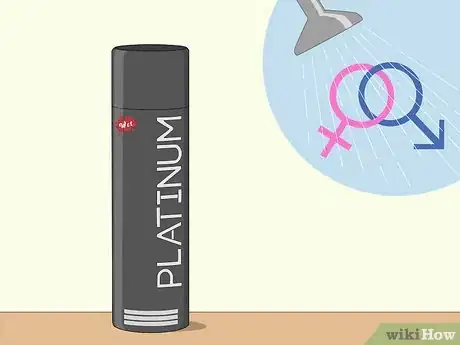
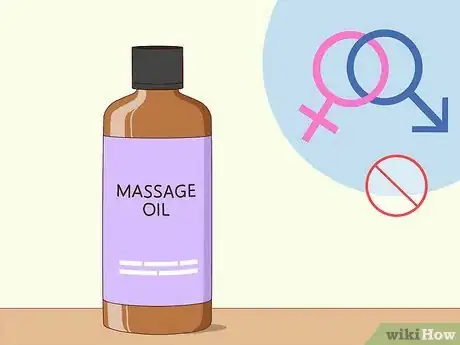
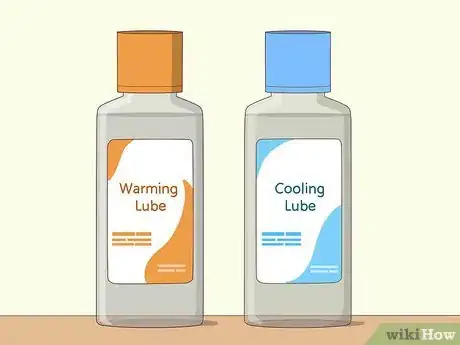

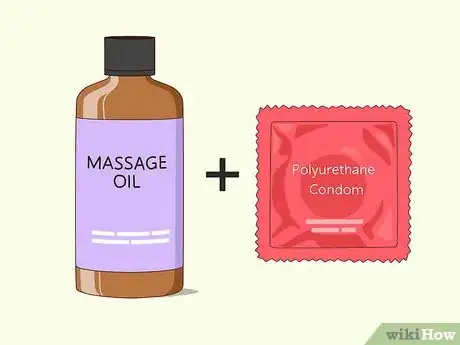
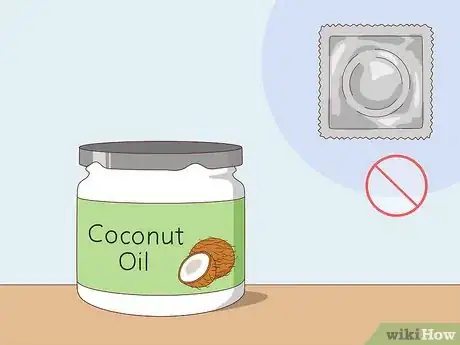



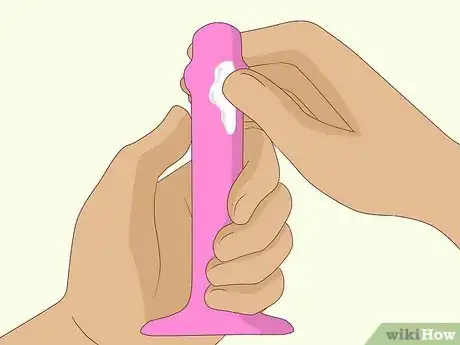

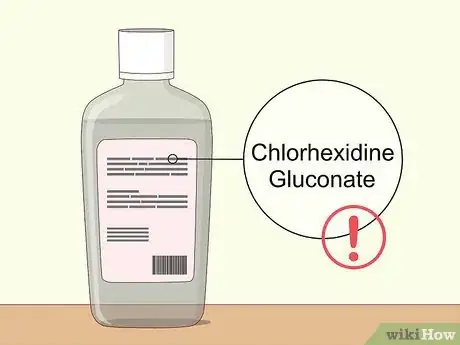
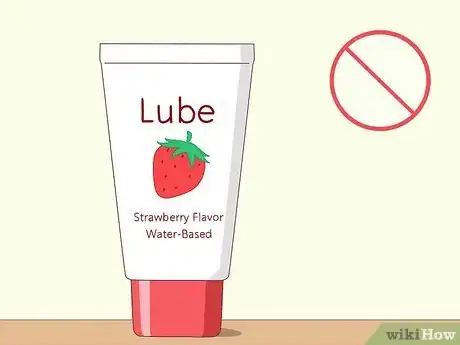



-Step-10.webp)
-Step-20.webp)



















-Step-10.webp)
-Step-20.webp)


































